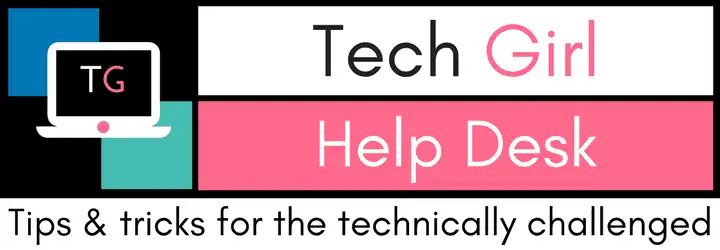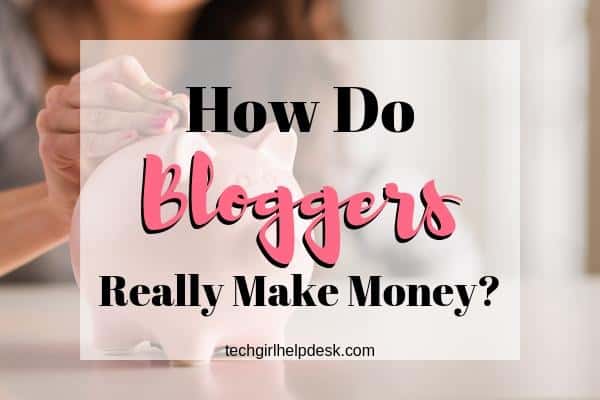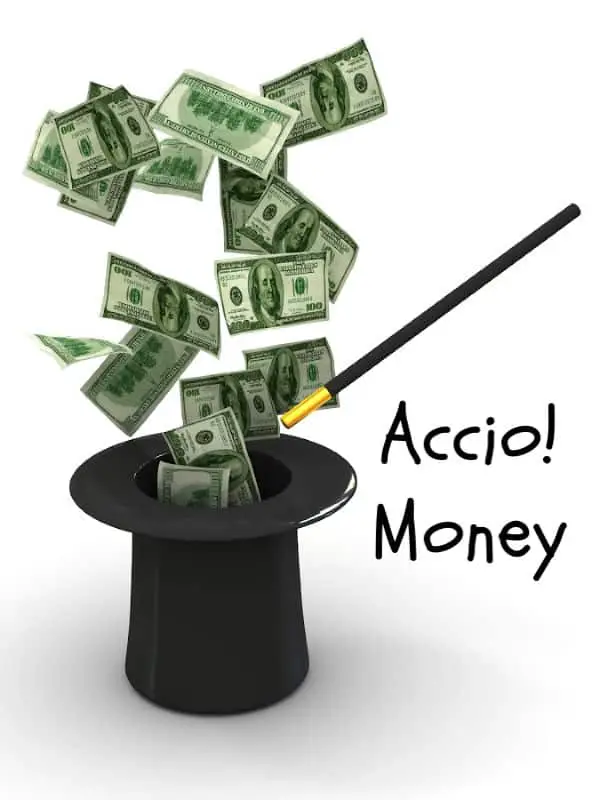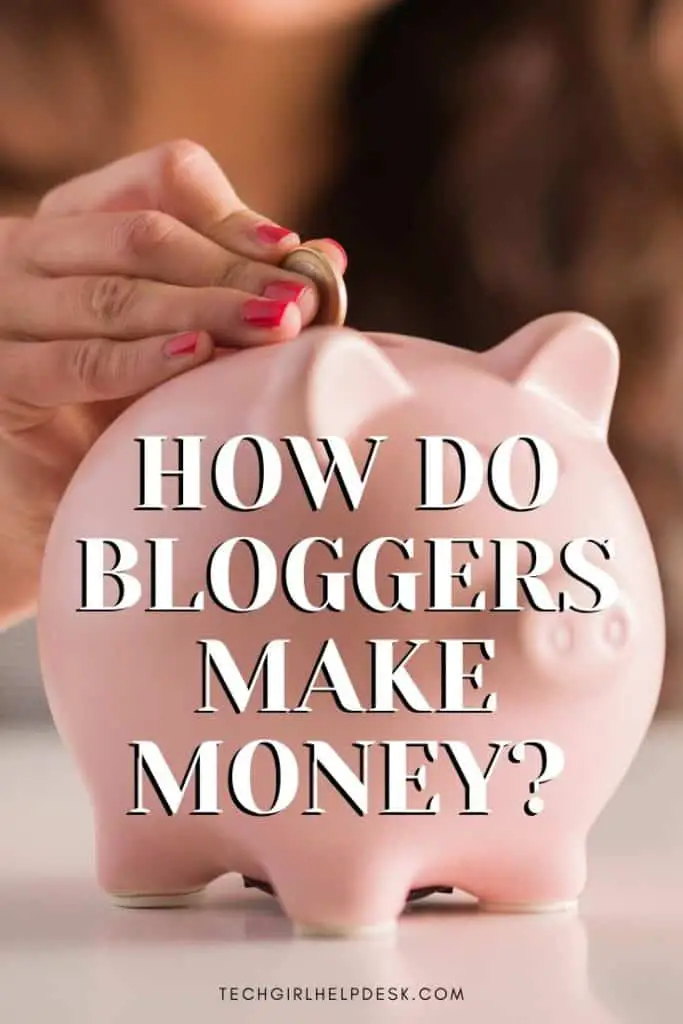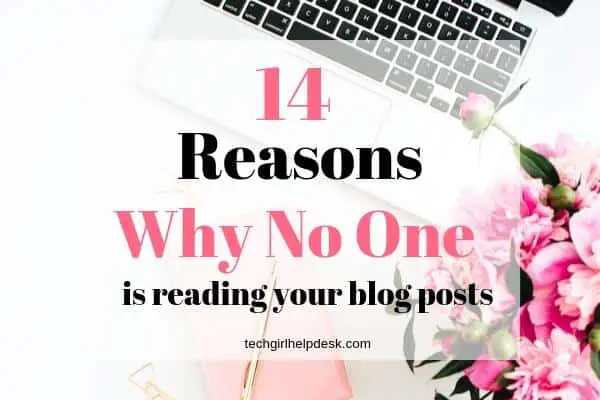How Do Bloggers Make Money? | 5 Simple Ways Bloggers Earn Money
If you’ve been around the blogosphere, for any length of time, you’ve probably noticed some people blog as a full-time job. Or maybe you’ve seen the pins on Pinterest exclaiming, “How I made $1,000 in my first month of blogging!” Or seen the monthly blog income reports from the prominent bloggers detailing all the money they earned in the previous month from blogging. Which naturally leads one to think, how do bloggers make money?
Can you really make money as a blogger?
Often you see blogging recommended as a way to work from home or as a side hustle. And blogging can be both of those things. However, blogging is not a get rich quick scheme.
Just because you’ve bought a domain name, purchased hosting, and started a blog, the money is not going to start rolling in magically.
Blogging is not a fast and easy way to make money. However, if you are willing to put in the time and do the hard work, and don’t jump ship the first time you run into a technical snag or writer’s block.
Then over time, you will establish an online presence with the potential to earn some extra side money or even a full-time income from your blog.
When people ask me about my blog, they eventually get around to asking the innocent question, “How do bloggers make money?” Most people I know have no idea that you can make money blogging!
So How Do Bloggers Make Money?
When people ask me this question, I tend to give them a simple answer–advertising. And while that’s undoubtedly a big part of it, advertising is not the only way you can earn money with blogging.
With this post, I hope to give you an overview of the primary ways bloggers can earn money working from home. Just in case you happen to be one of the many people who don’t realize that you can make money with a blog.
5 Ways to make money blogging
1. Affiliate Marketing
Affiliate marketing is the process of earning a commission by promoting other people’s (or company’s) products. You find a product you like, promote it to others and earn a piece of the profit for each sale that you make.
Pat Flynn of Smart Passive Income
Affiliate marketing is probably one of the most common (and my personal favorite way) ways that bloggers earn money with blogging. Affiliate marketing is also one of the most passive ways to make money with your blog.

Three Main Types of Affiliate Marketing
There are generally three types of affiliate marketing:
- Affiliate networks (Share-a-Sale, Cj.com, Awin)
- Private affiliate programs (eCourses, e-books, etc.)
- Shopping sites (Amazon, Target, Walmart)
With affiliate marketing, you get paid a commission that is a certain percentage of the product price. And the percentage rate can vary widely between the different types of affiliate marketing types.
Amazon is an excellent option for most bloggers because they are a well-known company, and people trust them. However, their commission rate is on the lower end, averaging about 4 percent, whereas some private programs offer a much higher commission rate, like 20-40% (sometimes more).
**This post may contain affiliate links for your convenience. This means if you purchase something through one of my links, I may receive a small commission with no extra cost to you. For more information, see my disclosures here.
For example, I am an affiliate for Pinning Perfect. One because it is my favorite Pinterest course. And two because my readers are new bloggers who are looking for help on how best to use Pinterest for their blogs.
The creators of Pinning Perfect provide me with a unique link so that they can track purchases made through my link. When I link to their course in a blog post, and someone clicks through and purchases the course, then I earn a small commission.
With affiliate marketing, you have complete control over which products and services you want to promote. So it is possible only to recommend things you approve of and love.
Two Favorite Resource on Affiliate Marketing
Two of my favorite resources to learn more about affiliate marketing are listed below.
- Making Sense of Affiliate Marketing by Michelle Schroeder-Gardner is the first affiliate marketing course I took when I first started looking into monetizing my blog. If you are new to affiliate marketing, I highly recommend this course if you want to get started with affiliate marketing and learn more about it. This course helped me feel confident when I got started monetizing my blog with affiliate marketing.
- Affiliate Marketing for Bloggers Course by Tasha Agruso is another excellent resource for learning how to implement affiliate marketing on your blog. This course has lots of videos showing you how exactly to use different affiliate programs.
2. Ad Network Revenue
Another prevalent way that bloggers earn money is with ad revenue. Ad networks are definitely the easiest to implement and maintain because once it is in place, you can “set it and forget it.” Although whether or not to displays ads is still a hotly debated topic throughout the blogosphere.
If you are new to blogging and just getting started with displaying ads, bloggers will usually sign up with ad networks like Google Adsense or Media.net. Then whichever ad network they go with provides special codes that are inserted into various places throughout their blog that will display third party advertisements.
Two Main Types of Advertisements
There are two main types of ads you can display:
CPC/PPC: cost per click/pay per click
You typically see CPC/PPC ads as banners within the content or in the sidebar of a website. With these types of ads, every time a reader clicks on the ad, you earn a small amount of money.
CPM: cost per 1,000 impressions
CPM ads work on views or impressions rather than clicks. You get paid a fixed amount for every 1,000 people who see the advertisement on your site.
When your blog starts getting more traffic, you can upgrade to more exclusive ad networks, such as Monumetrics or Mediavine. To qualify for Monumetrics, you need to have 10,000 pageviews per month, and with Mediavine, you need to have 25,000 sessions per month.
3. Direct Advertising
Bloggers can also sell advertising directly instead of, or in addition to, using ad networks. What this means is that a blogger is in direct contact with specific advertisers. This allows them to negotiate rates and decide which advertisers they want to promote, and that are a good fit for their blog audience.
With ad networks, a blogger doesn’t have as much control over which ads that get displayed. Many bloggers prefer direct advertising because they have more control over which products they promote.
4. Selling Your Own Products & Services
A blog is also an excellent platform for selling your own products or services. Many bloggers offer services like one-on-one coaching, virtual assisting, graphic design, or freelance writing. Bloggers can also create and sell physical products (i.e., DIY crafts), printables, or e-books.
5. Sponsored Posts
Another way to earn money with your blog is to write sponsored posts. A sponsored blog post looks like any other post on a blogger’s website and should have the same tone and feel like any other content on the site. The big difference is that a brand is paying the blogger to create the post.
The amount of money you can earn doing sponsored posts is often dependent on how much traffic a site has. But it can range from a free product to hundreds or thousands of dollars.
Linqia is a site where you can find sponsored post opportunities that may be a good fit for your audience.
Being Authentic
Bloggers are often very selective when it comes to what types of products they will promote. You want to build a relationship of trust with your readers, which means only promoting products that you genuinely love. Products that you would promote even if you weren’t getting paid to do so. If you promote products solely to earn money, your readers see that and are not going to stick around.
Remember to Disclose
Any content you create that you earn money from, whether it is a sponsored post or content that contains affiliate links. You must always disclose that you are a sponsor or an affiliate. That way, the reader understands that you have a relationship with the company.
Disclosures are an FTC-mandated practice. Essentially, whenever a link is used on your website that results in you getting paid, you must disclose this information to site visitors. This goes for affiliate links, sponsorships, endorsements, and any other type of content that you receive some kind of compensation.
While disclosures may seem like a hassle, there are two huge reasons that disclosures are necessary:
- They ensure fair business practices. Giving all content creators and marketers an even playing field, and offers buyers the chance to purchase from marketers they trust.
- They provide transparency to your site’s readers. Trust is essential for marketers, and can only be achieved through complete transparency.
Disclosures are a practice used for the benefit of consumers and marketers alike.
How Do Bloggers Get the Money They Earn?
As with most things, different companies pay in different ways — usually PayPal, direct deposit, or a mailed check.
The frequency of when you get paid also is different depending on the company, affiliate program, or ad network. With affiliate programs often payments are delayed by a month or two (60 days) to allow for any refunds or returns on product purchases.
Companies also vary when you get paid. Some may payout at the beginning of the month, the end of the month, or somewhere in between. It just depends on the terms of each company or ad network.
I hope this overview of some of the main ways that bloggers earn money online is helpful and gives you some ideas of how you can monetize your blog.

If this post on how bloggers make money has inspired you to get started with monetizing your blog I would love to hear about it in the comments below. Let me know what you think may work for your blog.
